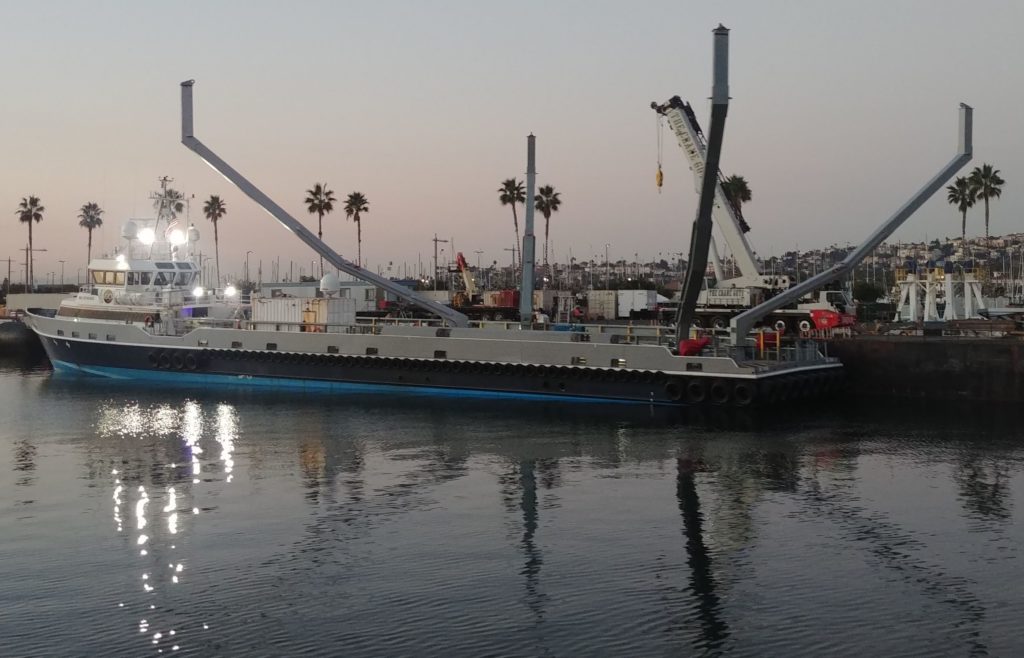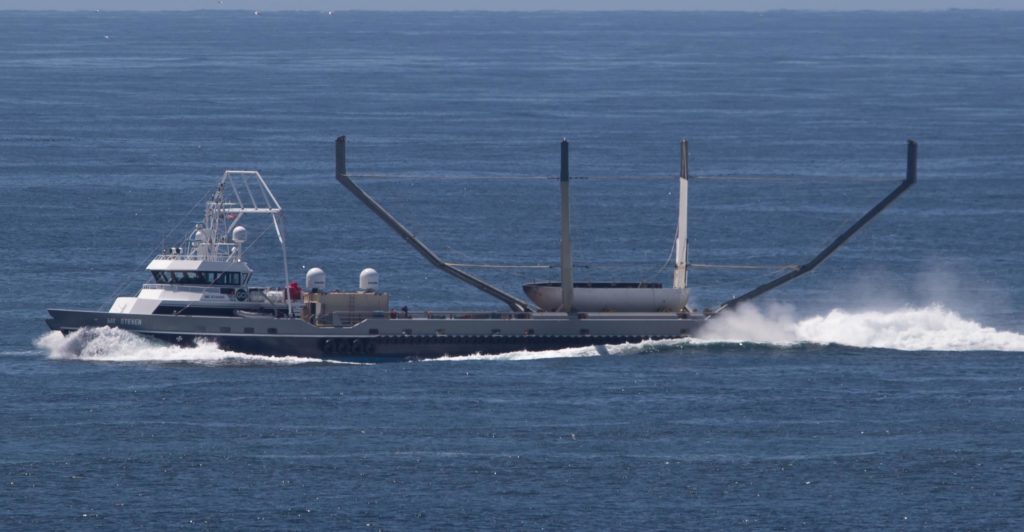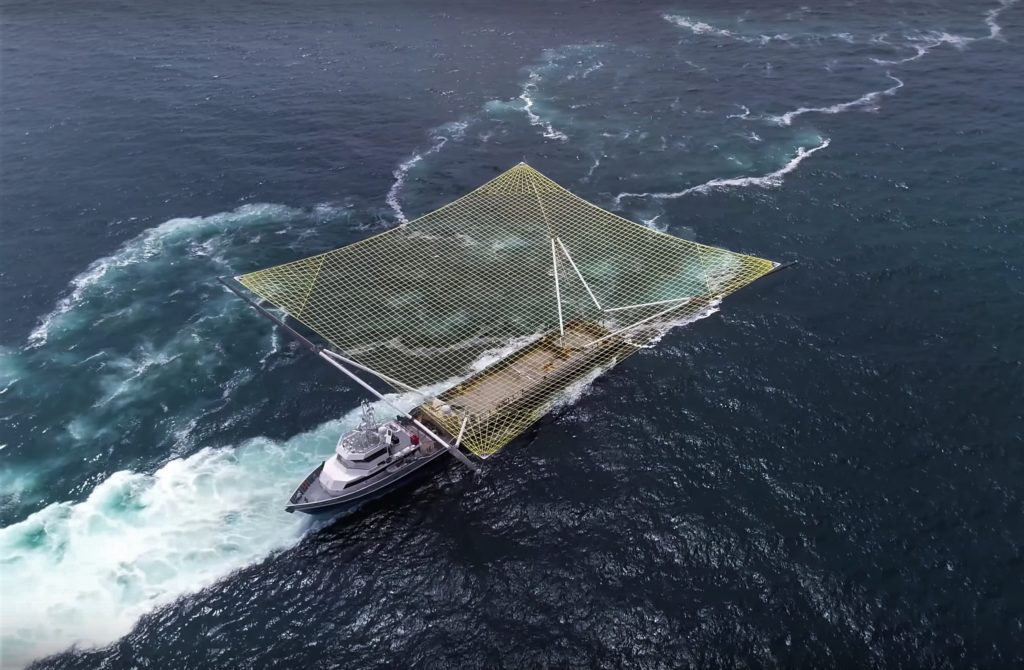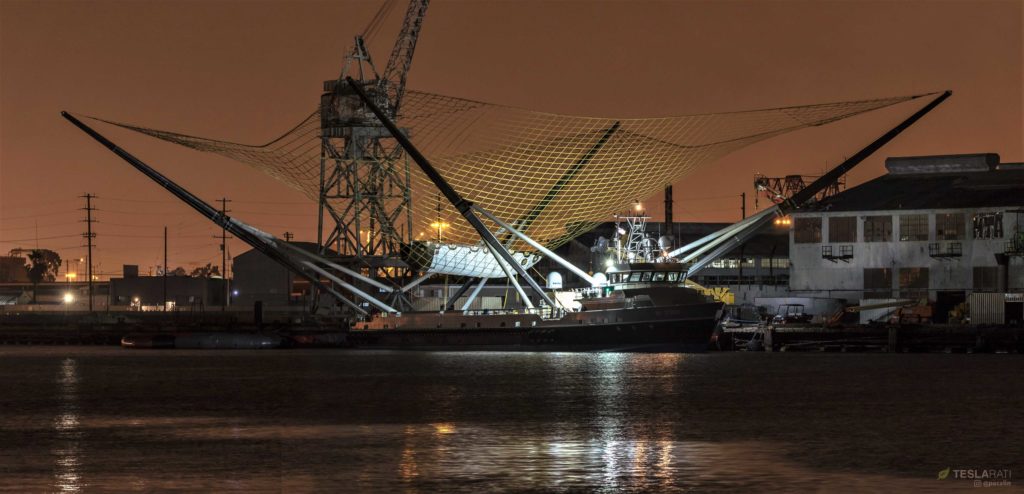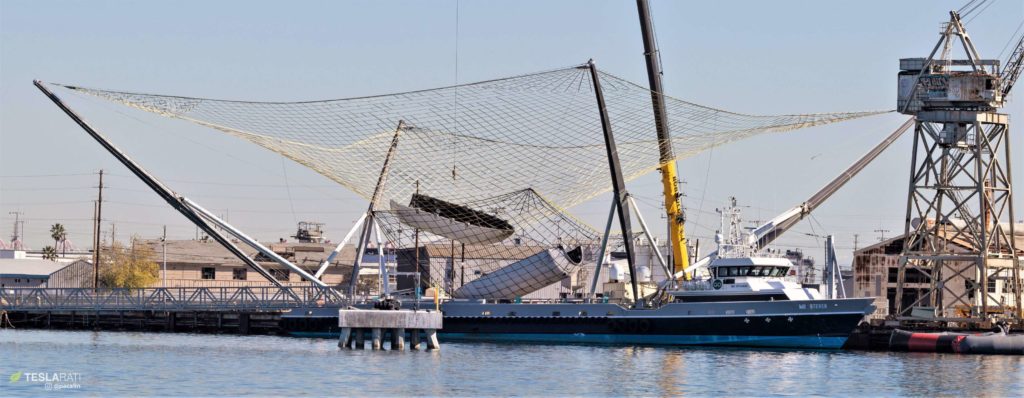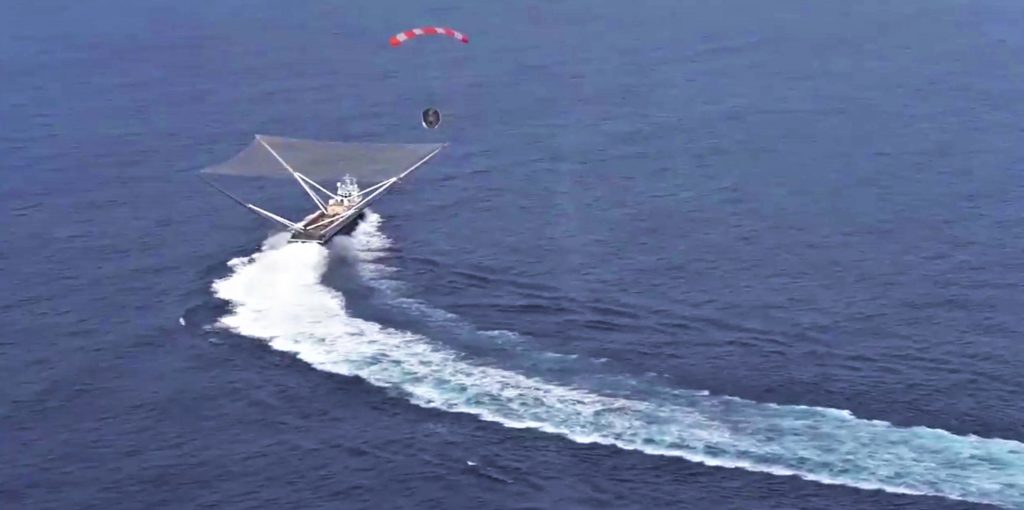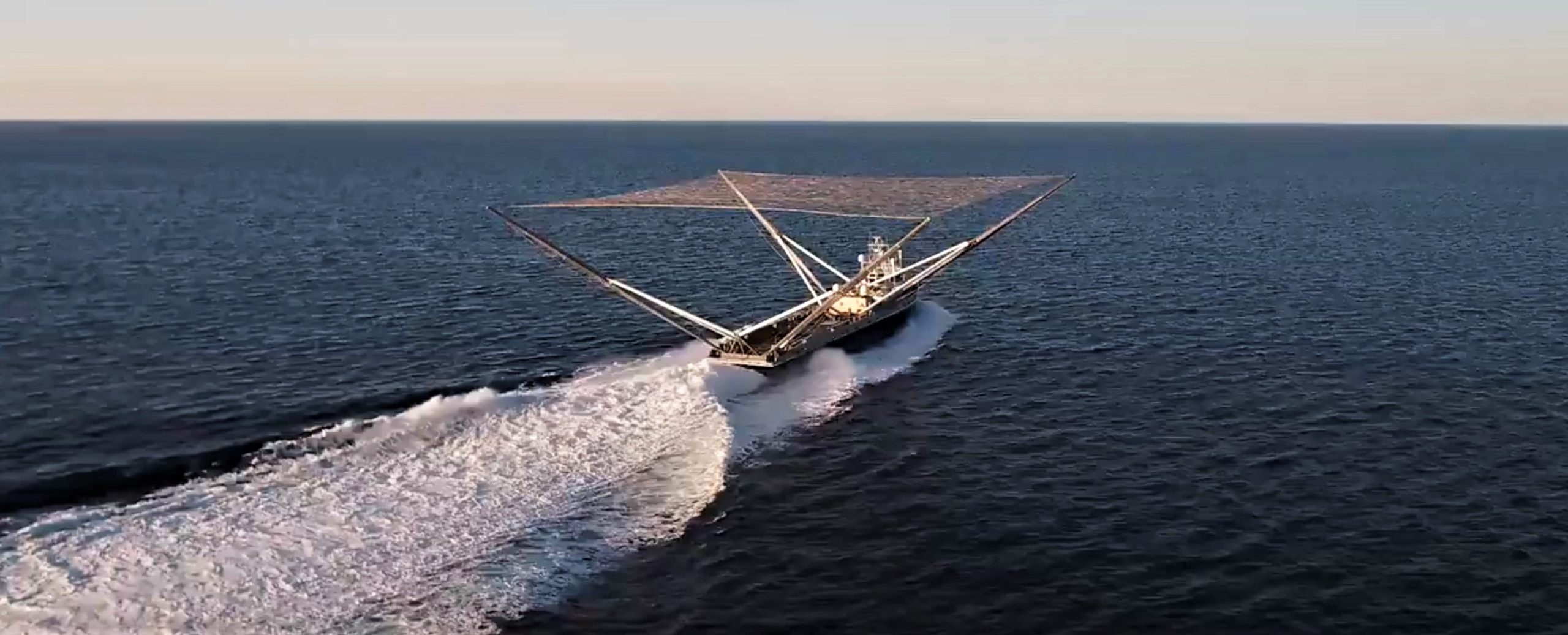
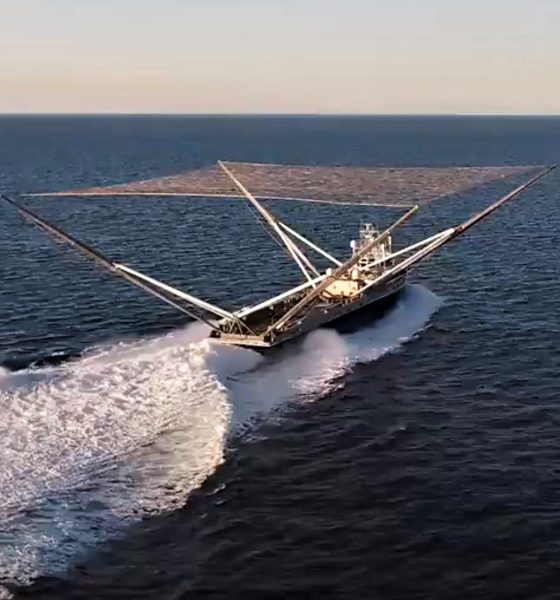
SpaceX
SpaceX fairing catcher Mr. Steven heads for Panama Canal after one last drop test
Iconic fairing recovery vessel Mr. Steven appears to have quietly departed for SpaceX’s Florida launch facilities a few days after completing (successfully or not) one final controlled fairing catch test in the Pacific Ocean.
While bittersweet for those that have closely followed the vessel’s development and many attempted Falcon fairing recoveries, this move should ultimately give Mr. Steven around three times as many opportunities to attempt fairing recoveries thanks to SpaceX’s significantly higher East Coast launch cadence.
Mr Steven docking last night after another helicopter drop test, fairing half aboard. #spacex @Teslarati pic.twitter.com/1uMm8ktzWY
— Pauline Acalin (@w00ki33) January 26, 2019
Under SpaceX lease since late 2017, the company moved the vessel to California and modified it with its first net and set of arms around December 2017. Mr. Steven attempted his first Falcon fairing catch – each half worth more than $3M – in February 2018 after the launch of Earth imaging satellite PAZ and two SpaceX Starlink prototypes, thus beginning a string of five unsuccessful recovery attempts for West Coast Falcon 9 launches. The lack of success has most certainly not been for a lack of trying, exemplified in large part by Mr. Steven’s frequent net and arm upgrades over the last year, culminating in the installation of four massive arms, a vast primary net, and a smaller secondary net below it.
Recent fairing recovery test with Mr. Steven. So close! pic.twitter.com/DFSCfBnM0Y
— SpaceX (@SpaceX) January 8, 2019
SpaceX engineers and technicians repeatedly managed to get Falcon fairing halves – autonomously guided by GPS after deploying parafoils – within 50 to a few hundred feet during several of those five post-launch attempts. In the last few months of 2018, SpaceX also began a program of controlled fairing drop tests, where a helicopter would lift a fairing half 5,000-10,000 feet up before releasing it for Mr. Steven. A recent drop test organized in either late-December or early-January saw the parasailing fairing half get so close to a successful catch that its parafoil rigging actually appeared to get tangled on (or at least bump) the edge of Mr. Steven’s net, spanning an area of around 3000 square meters (~30,000 sq ft).
Barring a continuation of SpaceX’s helicopter drop test program on the East Coast, Mr. Steven’s final controlled fairing recovery attempt occurred on January 25th, perhaps less than four days before the ship departed for Florida. After maneuvering wildly and reaching 28 mph (45 km/h) – the fastest speed yet clocked – on his trip back to port, Mr. Steven arrived with a fairing half tantalizingly cradled in the ship’s new secondary net, a perfectly ambiguous state that could indicate a successful catch and net transfer or a missed catch and ocean retrieval, with the smaller net used as an ad-hoc shock absorber during his sprint to port.
- The apparent fairing-grabbing mechanism or robot spotted aboard the SpaceX-leased vessel Mr. Steven. (Reddit /u/ vshie)
- Not nearly enough net, as it turned out. (Pauline Acalin, May 2018)
- Mr Steven testing his new net in a series of sea trials, July 11
- Mr. Steven returned to Port of San Pedro around on October 8th after a day spent at sea, apparently with a Falcon fairing half in tow. This is the second known time that a fairing has been in Mr. Steven’s net. The fairing was eventually lifted off around noon the following day. (Pauline Acalin)
- Mr. Steven was captured performing tests with a duo of fairings and nets at its Port of LA berth, January 22nd. (Pauline Acalin)
- Prior to his Panama Canal exit, Mr. Steven barely missed 2-3 successful Falcon fairing catches during several controlled drop tests. (SpaceX)
Back to Port Canaveral
Prior to Mr. Steven’s California station and arm/net upgrade, the vessel was introduced to SpaceX in Florida as a sort of faster version of the slower service vessels already used to support drone ship deployments and recover fairing halves (or shards) out of the ocean. Although it remains entirely possible that Mr. Steven’s abrupt journey towards southern Mexico is a false alarm, it appears quite likely that the vessel will ultimately end up back where it started its SpaceX journey. After returning to Port Canaveral, Mr. Steven should be able to support a range of post-launch fairing recovery attempts thanks to SpaceX’s consistently-busy East Coast launch schedule.
At his current cruising speed of ~18 knots (21 mph/35 km/h), Mr. Steven will take at least 9-10 days (~220-240 hours) to travel the ~7500 km (4600 mi) of ocean separating Port of LA and Port Canaveral. Even assuming many lengthy stops for fuel and supplies, the vessel should easily arrive in time to attempt its first East Coast fairing catch in support of SpaceX’s next launch, NET February 18th. After that, Crew Dragon’s inaugural orbital launch (DM-1) is targeted for late February, followed by Cargo Dragon’s 17th operational mission (NET March 16th) and the second-ever launch of Falcon Heavy, absolutely no earlier than March 7th.
Mr. Steven appears to have quietly departed Port of Los Angeles for Manzanillo, a port on the southwest coast of Mexico. This is likely Leg #1 of a voyage to Port Canaveral, where he can support #SpaceX's more frequent Florida launches. He'll be missed on the West Coast 🙁 pic.twitter.com/Jb5cOA2Cda
— Eric Ralph (@13ericralph31) January 29, 2019

Elon Musk
SpaceX maintains unbelievable Starship target despite Booster 18 incident
It appears that it will take more than an anomaly to stop SpaceX’s march towards Starship V3’s refinement.
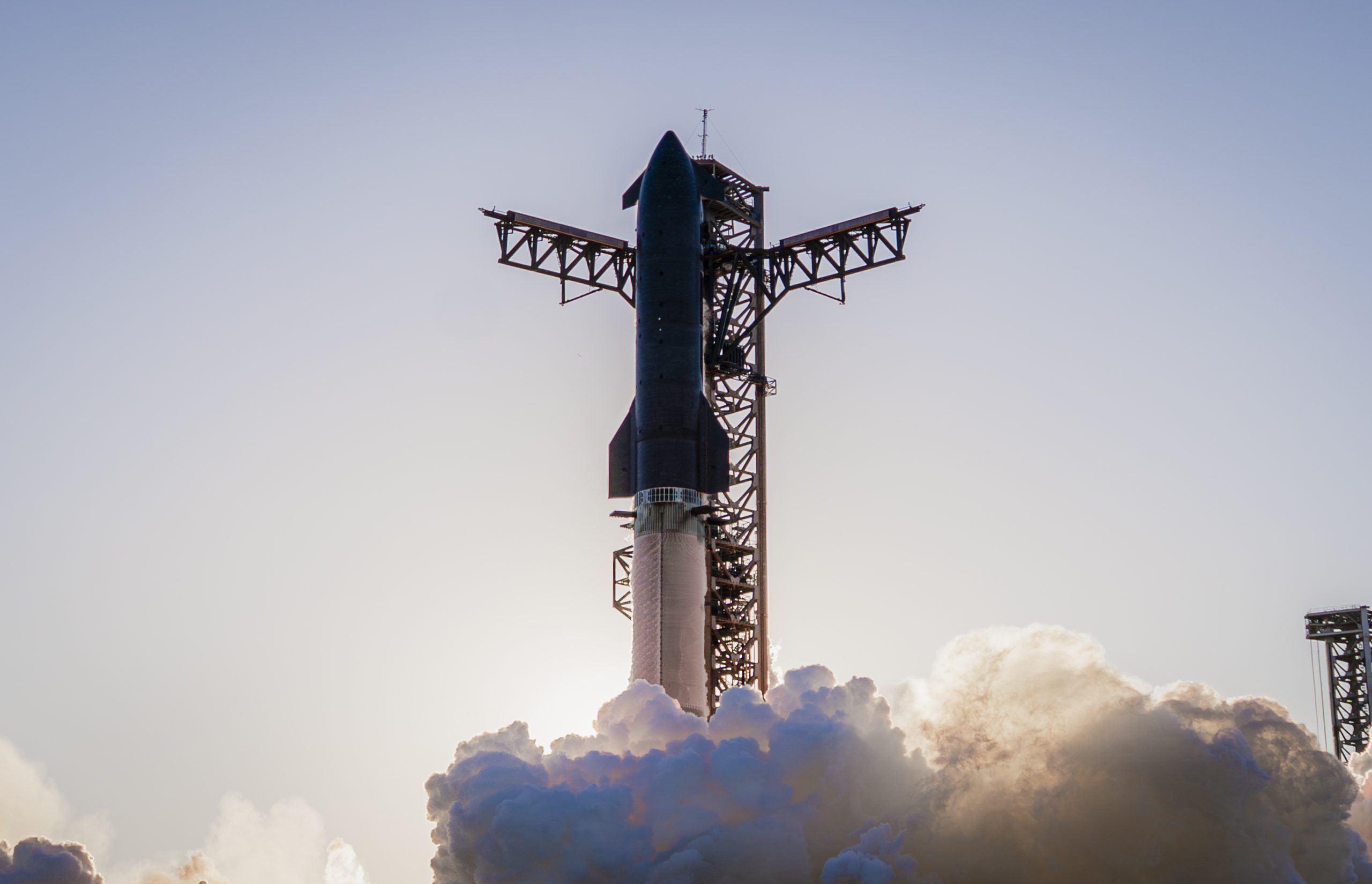
SpaceX recently shared an incredibly ambitious and bold update about Starship V3’s 12th test flight.
Despite the anomaly that damaged Booster 18, SpaceX maintained that it was still following its plans for the upgraded spacecraft and booster for the coming months. Needless to say, it appears that it will take more than an anomaly to stop SpaceX’s march towards Starship V3’s refinement.
Starship V3 is still on a rapid development path
SpaceX’s update was posted through the private space company’s official account on social media platform X. As per the company, “the Starbase team plans to have the next Super Heavy booster stacked in December, which puts it on pace with the test schedule planned for the first Starship V3 vehicle and associated ground systems.”
SpaceX then announced that Starship V3’s maiden flight is still expected to happen early next year. “Starship’s twelfth flight test remains targeted for the first quarter of 2026,” the company wrote in its post on X.
Elon Musk mentioned a similar timeline on X earlier this year. In the lead up to Starshp Flight 11, which proved flawless, Musk stated that “Starship V3 is a massive upgrade from the current V2 and should be through production and testing by end of year, with heavy flight activity next year.” Musk has also mentioned that Starship V3 should be good enough to use for initial Mars missions.
Booster 18 failure not slowing Starship V3’s schedule
SpaceX’s bold update came after Booster 18 experienced a major anomaly during gas system pressure testing at SpaceX’s Massey facility in Starbase, Texas. SpaceX confirmed in a post on X that no propellant was loaded, no engines were installed, and personnel were positioned at a safe distance when the booster’s lower section crumpled, resulting in no injuries.
Still, livestream footage showed significant damage around the liquid oxygen tank area of Booster 18, leading observers to speculate that the booster was a total loss. Booster 18 was among the earliest vehicles in the Starship V3 series, making the failure notable. Despite the setback, Starship V3’s development plans appear unchanged, with SpaceX pushing ahead of its Q1 2026 test flight target.
Elon Musk
SpaceX issues statement on Starship V3 Booster 18 anomaly
The incident unfolded during gas-system pressure testing at the company’s Massey facility in Starbase, Texas.

SpaceX has issued an initial statement about Starship Booster 18’s anomaly early Friday. The incident unfolded during gas-system pressure testing at the company’s Massey facility in Starbase, Texas.
SpaceX’s initial comment
As per SpaceX in a post on its official account on social media platform X, Booster 18 was undergoing gas system pressure tests when the anomaly happened. Despite the nature of the incident, the company emphasized that no propellant was loaded, no engines were installed, and personnel were kept at a safe distance from the booster, resulting in zero injuries.
“Booster 18 suffered an anomaly during gas system pressure testing that we were conducting in advance of structural proof testing. No propellant was on the vehicle, and engines were not yet installed. The teams need time to investigate before we are confident of the cause. No one was injured as we maintain a safe distance for personnel during this type of testing. The site remains clear and we are working plans to safely reenter the site,” SpaceX wrote in its post on X.
Incident and aftermath
Livestream footage from LabPadre showed Booster 18’s lower half crumpling around the liquid oxygen tank area at approximately 4:04 a.m. CT. Subsequent images posted by on-site observers revealed extensive deformation across the booster’s lower structure. Needless to say, spaceflight observers have noted that Booster 18 would likely be a complete loss due to its anomaly.
Booster 18 had rolled out only a day earlier and was one of the first vehicles in the Starship V3 program. The V3 series incorporates structural reinforcements and reliability upgrades intended to prepare Starship for rapid-reuse testing and eventual tower-catch operations. Elon Musk has been optimistic about Starship V3, previously noting on X that the spacecraft might be able to complete initial missions to Mars.
Elon Musk
SpaceX Starship Version 3 booster crumples in early testing
Photos of the incident’s aftermath suggest that Booster 18 will likely be retired.

SpaceX’s new Starship first-stage booster, Booster 18, suffered major damage early Friday during its first round of testing in Starbase, Texas, just one day after rolling out of the factory.
Based on videos of the incident, the lower section of the rocket booster appeared to crumple during a pressurization test. Photos of the incident’s aftermath suggest that Booster 18 will likely be retired.
Booster test failure
SpaceX began structural and propellant-system verification tests on Booster 18 Thursday night at the Massey’s Test Site, only a few miles from Starbase’s production facilities, as noted in an Ars Technica report. At 4:04 a.m. CT on Friday, a livestream from LabPadre Space captured the booster’s lower half experiencing a sudden destructive event around its liquid oxygen tank section. Post-incident images, shared on X by @StarshipGazer, showed notable deformation in the booster’s lower structure.
Neither SpaceX nor Elon Musk had commented as of Friday morning, but the vehicle’s condition suggests it is likely a complete loss. This is quite unfortunate, as Booster 18 is already part of the Starship V3 program, which includes design fixes and upgrades intended to improve reliability. While SpaceX maintains a rather rapid Starship production line in Starbase, Booster 18 was generally expected to validate the improvements implemented in the V3 program.
Tight deadlines
SpaceX needs Starship boosters and upper stages to begin demonstrating rapid reuse, tower catches, and early operational Starlink missions over the next two years. More critically, NASA’s Artemis program depends on an on-orbit refueling test in the second half of 2026, a requirement for the vehicle’s expected crewed lunar landing around 2028.
While SpaceX is known for diagnosing failures quickly and returning to testing at unmatched speed, losing the newest-generation booster at the very start of its campaign highlights the immense challenge involved in scaling Starship into a reliable, high-cadence launch system. SpaceX, however, is known for getting things done quickly, so it would not be a surprise if the company manages to figure out what happened to Booster 18 in the near future.

